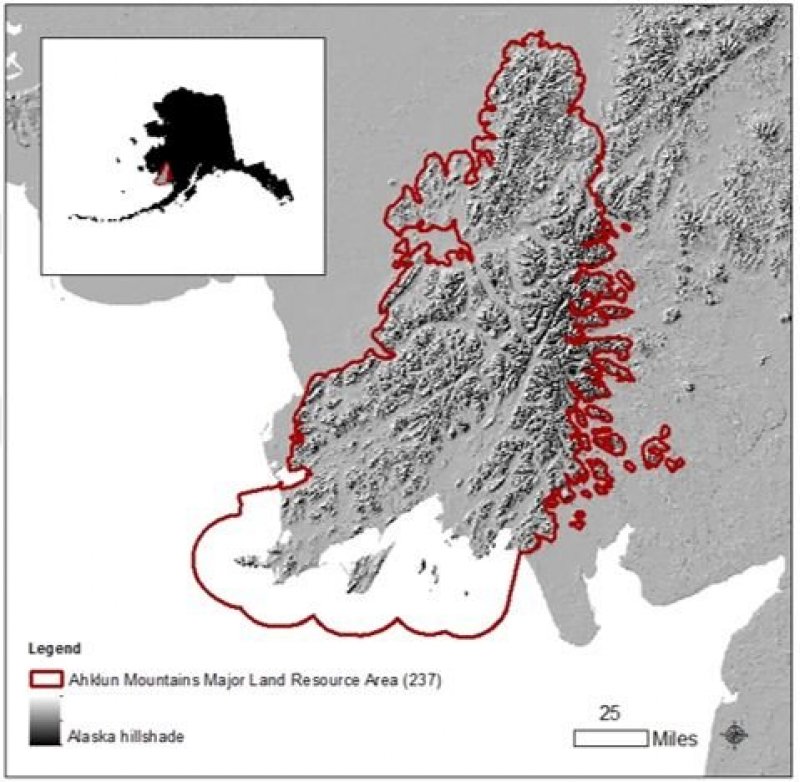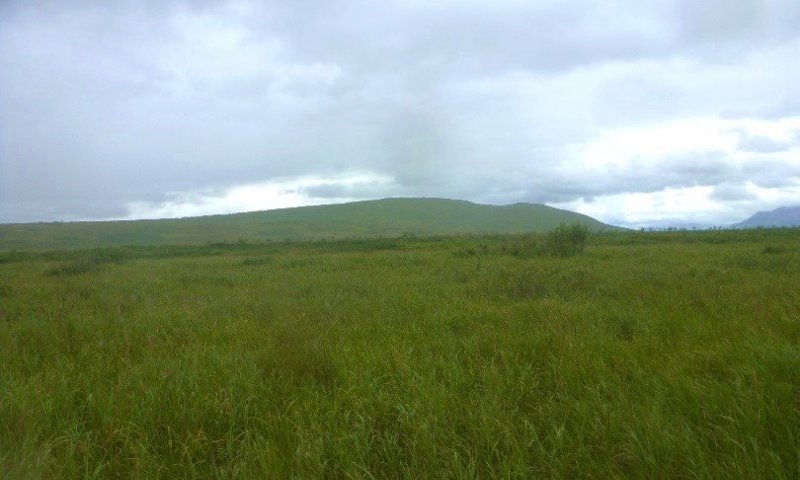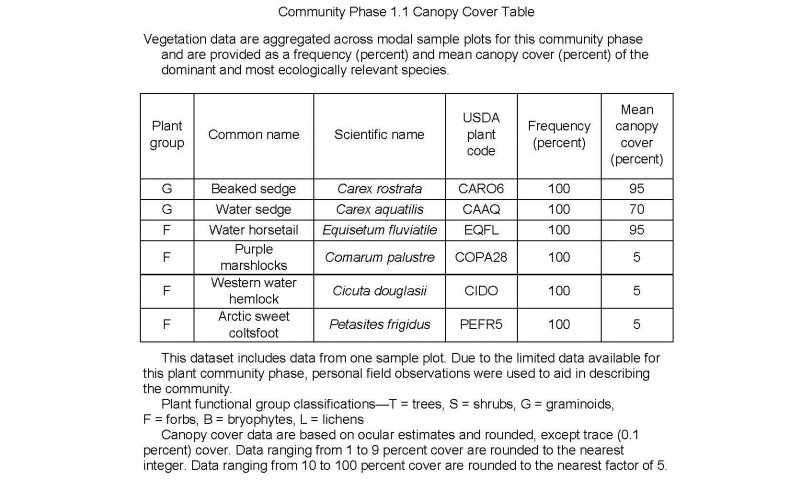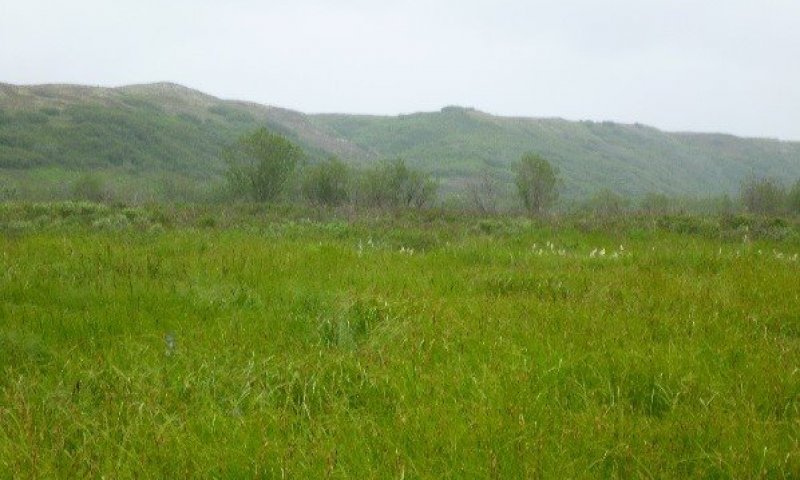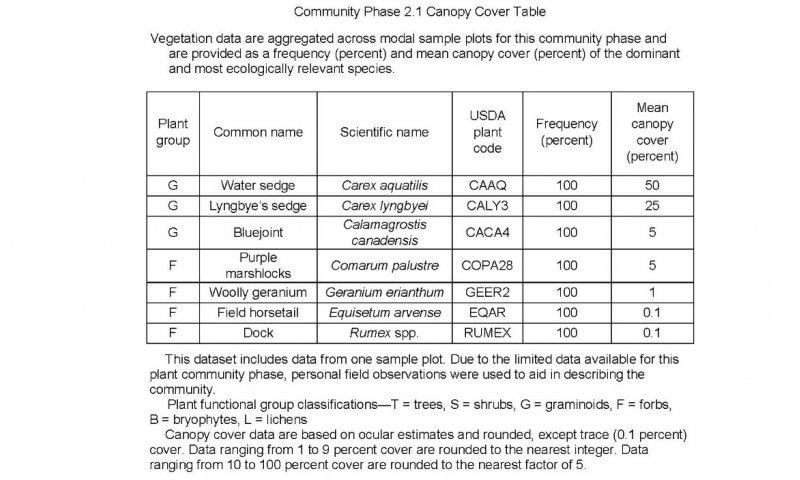

Natural Resources
Conservation Service
Ecological site R237XY226AK
Western Alaska Maritime Grassland Peat Flood Plains, Depression
Last updated: 7/23/2020
Accessed: 12/21/2025
General information
Provisional. A provisional ecological site description has undergone quality control and quality assurance review. It contains a working state and transition model and enough information to identify the ecological site.
MLRA notes
Major Land Resource Area (MLRA): 237X–Ahklun Mountains
The Ahklun Mountains Major Land Resource Area (MLRA 237) is in western Alaska (fig. 3). This MLRA covers approximately 14,555 square miles, and it includes the mountains, hills, and valleys of the Kilbuck Mountains in the north and the Ahklun Mountains in the south. Except for the Kilbuck Mountains and the highest ridges of the Ahklun Mountains, the MLRA was extensively glaciated during the Pleistocene (Kautz et al., 2004). Today, a few small glaciers persist in mountainous cirques (Gallant et al., 1995). The present-day landscape and landforms reflect this glacial history; glacial moraines and glacial drift cover much of the area (USDA-NRCS, 2006). The landscape of the MLRA is primarily defined by low, steep, rugged mountains cut by narrow-to-broad valleys. Flood plains and terraces of varying sizes are common at the lower elevations in the valley bottoms. Glacially carved valleys host many lakes. Togiak Lake is one of the largest lakes in the region. It is 13 miles long and about 9,500 acres in size. Major rivers include the Goodnews, Togiak, Kanektok, Osviak, Eek, and Arolik Rivers. Where the Goodnews and Togiak Rivers reach the coast, the nearly level to rolling deltas support numerous small lakes.
This MLRA has two distinct climatic zones: subarctic continental and maritime continental (fig. 4). The high-elevation areas are in the subarctic continental zone. The mean annual precipitation is more than 75 inches, and the mean annual air temperature is below about 27 degrees F (-3 degrees C) in extreme locations. The warmer, drier areas at the lower elevations are in the maritime continental zone. The mean annual precipitation is 20 to 50 inches, and the mean annual air temperature is about 30 to 32 degrees F (-0.2 to 1.2 degrees C) (PRISM). This climatic zone is influenced by both maritime and continental factors. The temperatures in summer are moderated by the open waters of the Bering Sea, and the temperatures in winter are more continental due to the presence of ice in the sea (Western Regional Climate Center, 2017). The seasonal ice reaches its southernmost extent off the coast of Alaska in Bristol Bay (Alaska Climate Research Center, 2017). The western coast of Alaska is also influenced by high winds from strong storms and airmasses in the Interior Region of Alaska (Hartmann, 2002).
The Ahklun Mountains MLRA is principally undeveloped wilderness. Federally managed lands include the Togiak and Alaska Maritime National Wildlife Refuges. The MLRA is sparsely populated, but it has several communities, including Togiak, Manokotak, Twin Hills, and Goodnews Bay. Togiak is the largest village. It has a population of approximately 855, most of which are Yup’ik Alaska Natives (U.S. Census Bureau, 2016). Major land uses include subsistence activities (fishing, hunting, and gathering) and wildlife recreation (USDA-NRCS, 2006; Kautz et al., 2004).
Ecological site concept
Ecological site R237XY226AK is in organic soil depressions of lowland flood plains. The reference state supports a single community, which is the reference plant community. Ponding and flooding help to sustain the reference plant community. An alternate state is a result of beaver activity.
The reference plant community is a wet sedge-herb meadow tundra (Viereck et al., 1992). Common obligate wetland graminoids are water sedge (Carex aquatilis) and beaked sedge (C. rostrata), and common hydrophilic forbs are water horsetail (Equisetum fluviatile) and purple marshlocks (Comarum palustre). Other common species include arctic sweet coltsfoot (Petasites frigidus) and western water hemlock (Cicuta douglasii).
Associated sites
| R237XY210AK |
Western Alaska Maritime Scrubland Gravelly Flood Plains Ecological site R237XY226AK is on flood plains. Associated sites on flood plains include R237XY210AK, R237XY211AK, and R237XY212AK. Site R237XY226AK is differentiated from these sites by landform, slope shape, soils, and disturbances. Ecotonal plant communities that have characteristics from more than one ecological site are in areas where these sites abut. This is especially noticeable in smaller depressions because the edge effects are relatively large or make up the total area and species from surrounding ecological sites may intermix. |
|---|---|
| R237XY211AK |
Western Alaska Maritime Scrubland Loamy Flood Plains Ecological site R237XY226AK is on flood plains. Associated sites on flood plains include R237XY210AK, R237XY211AK, and R237XY212AK. Site R237XY226AK is differentiated from these sites by landform, slope shape, soils, and disturbances. Ecotonal plant communities that have characteristics from more than one ecological site are in areas where these sites abut. This is especially noticeable in smaller depressions because the edge effects are relatively large or make up the total area and species from surrounding ecological sites may intermix. |
| R237XY212AK |
Western Alaska Maritime Scrubland Silty Flood Plains Ecological site R237XY226AK is on flood plains. Associated sites on flood plains include R237XY210AK, R237XY211AK, and R237XY212AK. Site R237XY226AK is differentiated from these sites by landform, slope shape, soils, and disturbances. Ecotonal plant communities that have characteristics from more than one ecological site are in areas where these sites abut. This is especially noticeable in smaller depressions because the edge effects are relatively large or make up the total area and species from surrounding ecological sites may intermix. |
Similar sites
| R237XY205AK |
Western Alaska Maritime Scrubland Loamy Swales Although site R237XY205AK is similar to site R237XY226AK, site R237XY205AK is in swales that are not subject to ponding and are not susceptible to beaver damming. Site R237XY205AK supports willows and bluejoint in the reference plant community, which are not in site R237XY226AK. Differences in soils and disturbance regimes lead to different reference state communities. |
|---|---|
| R237XY208AK |
Western Alaska Maritime Scrubland Peat Depressions Sites R237XY226AK and R237XY208AK are in depressions, and both support a variety of hydrophilic plant species. Site R237XY226AK is in mineral soil depressions of flood plains, and site R237XY208AK is in organic depressions of low- and high-elevation glaciated plains. Differences in soils and disturbance regimes lead to different reference state communities. |
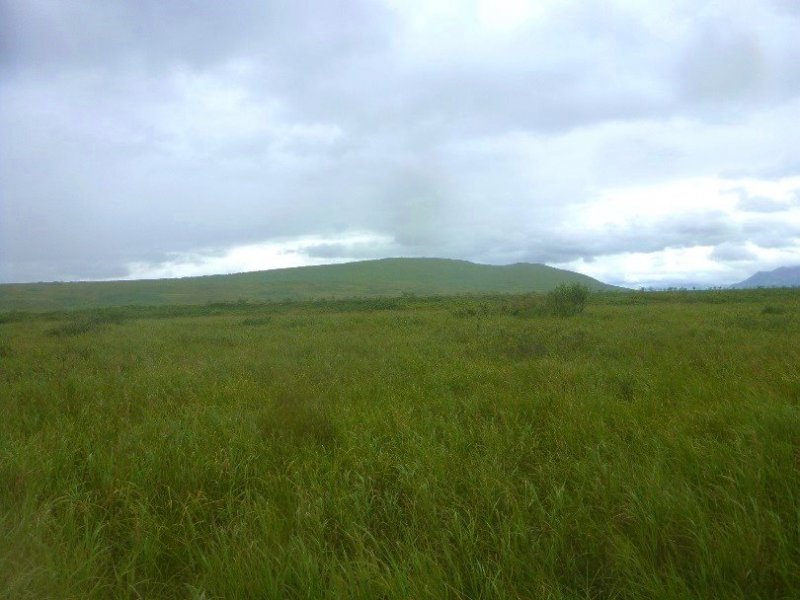
Figure 1. Willows encroach on the reference plant community in some areas.
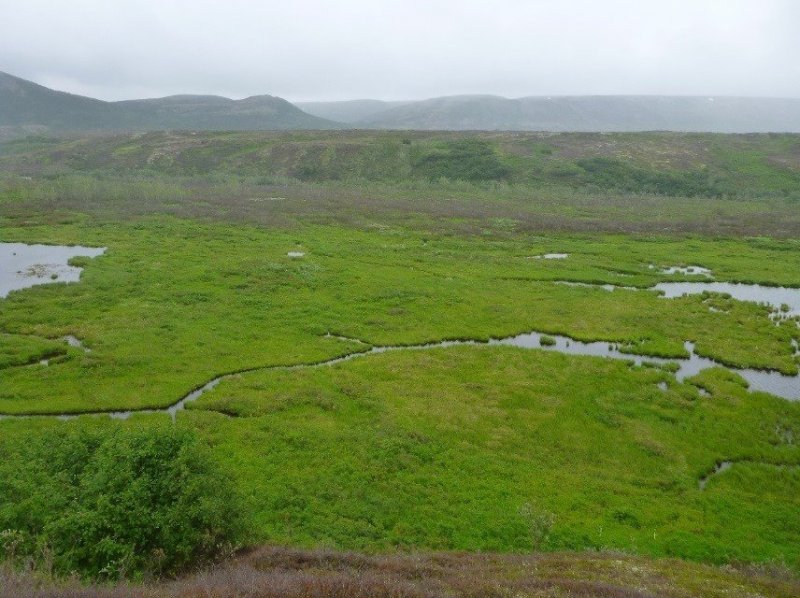
Figure 2. View of alternate beaver-affected state. Multiple beaver dams and lodges are in the large depressions. Beaver dams are at far left and just out of view on right.
Table 1. Dominant plant species
| Tree |
Not specified |
|---|---|
| Shrub |
Not specified |
| Herbaceous |
(1) Carex |
Click on box and path labels to scroll to the respective text.
Ecosystem states
| T1A | - | Beaver dam construction |
|---|---|---|
| R2A | - | Hypothetical dam removal |
